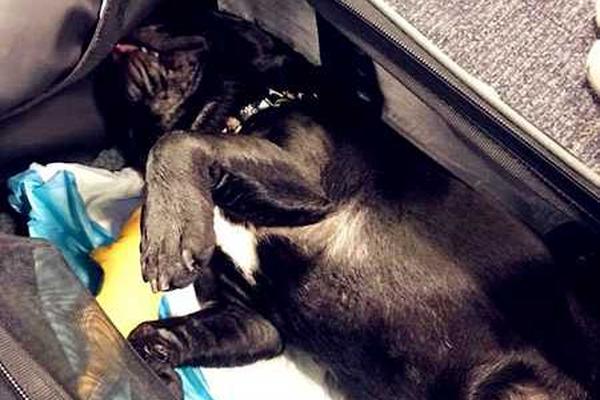
x0dx0a2 installation media supports UEFI startup.
FFDEL, etc., generally it will be displayed at the bottom of the screen when it is turned on), enter the motherboard BIOS, remove Security Boot, and select the USB flash drive in UEFI mode to start installing Windows 7.
For some slightly older computers, UEFI support may not be very good, which can be installed by loading EFI Shell. At this time, more support files need to be added to the USB flash drive. In addition to the bootmgfw.efi just mentioned, there is also shell.efi, but this time it can be added to the root directory.
Next is the system installation process. Wait quietly for the installation to end, and then set the relevant information, and the installation of the win7 system will be completed. We use the win7 system installed by gho mirror image above. In addition to the gho mirror image, the iso mirror image is also applicable to uefi to start and install the win7 system. uefi also has many other functions.
1. In the advanced boot in "Recovery", we select "Restart" and it will automatically restart. After restarting, enter The interface is the UEFI interface. Then we can choose according to our own needs. In UEFOn the I interface, we can see that there are many options, which can be useful when the system has problems.
2. The win10 operating system is installed, but it cannot be turned on, and this page appears. According to the prompts below, pressing F8 is not available at all. You can only "press esc to specify UEFI firmware settings". Press esc on the keyboard to enter the motherboard settings. Click "Bootmenu (F8)". The interface appears.
3. Shut down/r/fw Windows will display a warning message indicating that the system will restart within one minute. Turn off the warning message and save all the work, and the system will automatically restart and boot into UEFI mode.
4. The traditional startup method of win10 is changed to uefi as follows: operating environment: Lenovo Savior Y7000, windows10 system.In the process of restarting the computer, keep pressing the del key to enter the bios interface. After entering the bios interface, select "Advanced Mode" at the bottom of the page, and then select "Boot" at the top of the page.
5. Method: Make sure that your computer is a gpt partition table, because the computer is a gpt partition table to support uefi startup. If it is a traditional partition, you can use the diskgenius partition tool to convert it to gpt partition first. After confirming that the partition is correct, restart the computer, and keep pressing the del key to let the computer enter the bios interface.
6. Several ways to enter the BIOS in win10. The easiest way to enter the BIOS using the system settings is through the setting function of Windows 10. Press the Win+I key to open the setting window.Select "Update and Security" on the left side of the window, and then select "Restore" on the right.
Quickly and continuously press the ibm notebook bios hotkey to enter the bios interface and set it to ue Fi start-up mode.
Among them, the most common way is to start through a USB flash drive or UEFI. In this article, we will focus on these two ways. To boot and install the operating system through the USB flash drive, you need to burn the ISO image file of the operating system to the USB flash drive first.
Turn on the UEFI boot function of the computer.Start the computer, press the corresponding key to enter the computer's BIOS system, navigate to the Configuration tab, press Enter on Boot Type, select UEFI Boot Type, and save and exit.

Binance app-APP, download it now, new users will receive a novice gift pack.
x0dx0a2 installation media supports UEFI startup.
FFDEL, etc., generally it will be displayed at the bottom of the screen when it is turned on), enter the motherboard BIOS, remove Security Boot, and select the USB flash drive in UEFI mode to start installing Windows 7.
For some slightly older computers, UEFI support may not be very good, which can be installed by loading EFI Shell. At this time, more support files need to be added to the USB flash drive. In addition to the bootmgfw.efi just mentioned, there is also shell.efi, but this time it can be added to the root directory.
Next is the system installation process. Wait quietly for the installation to end, and then set the relevant information, and the installation of the win7 system will be completed. We use the win7 system installed by gho mirror image above. In addition to the gho mirror image, the iso mirror image is also applicable to uefi to start and install the win7 system. uefi also has many other functions.
1. In the advanced boot in "Recovery", we select "Restart" and it will automatically restart. After restarting, enter The interface is the UEFI interface. Then we can choose according to our own needs. In UEFOn the I interface, we can see that there are many options, which can be useful when the system has problems.
2. The win10 operating system is installed, but it cannot be turned on, and this page appears. According to the prompts below, pressing F8 is not available at all. You can only "press esc to specify UEFI firmware settings". Press esc on the keyboard to enter the motherboard settings. Click "Bootmenu (F8)". The interface appears.
3. Shut down/r/fw Windows will display a warning message indicating that the system will restart within one minute. Turn off the warning message and save all the work, and the system will automatically restart and boot into UEFI mode.
4. The traditional startup method of win10 is changed to uefi as follows: operating environment: Lenovo Savior Y7000, windows10 system.In the process of restarting the computer, keep pressing the del key to enter the bios interface. After entering the bios interface, select "Advanced Mode" at the bottom of the page, and then select "Boot" at the top of the page.
5. Method: Make sure that your computer is a gpt partition table, because the computer is a gpt partition table to support uefi startup. If it is a traditional partition, you can use the diskgenius partition tool to convert it to gpt partition first. After confirming that the partition is correct, restart the computer, and keep pressing the del key to let the computer enter the bios interface.
6. Several ways to enter the BIOS in win10. The easiest way to enter the BIOS using the system settings is through the setting function of Windows 10. Press the Win+I key to open the setting window.Select "Update and Security" on the left side of the window, and then select "Restore" on the right.
Quickly and continuously press the ibm notebook bios hotkey to enter the bios interface and set it to ue Fi start-up mode.
Among them, the most common way is to start through a USB flash drive or UEFI. In this article, we will focus on these two ways. To boot and install the operating system through the USB flash drive, you need to burn the ISO image file of the operating system to the USB flash drive first.
Turn on the UEFI boot function of the computer.Start the computer, press the corresponding key to enter the computer's BIOS system, navigate to the Configuration tab, press Enter on Boot Type, select UEFI Boot Type, and save and exit.

 OKX Wallet APK
OKX Wallet APK
996.14MB
Check Binance app
Binance app
169.18MB
Check Binance app
Binance app
379.87MB
Check Binance app
Binance app
382.26MB
Check OKX Wallet APK
OKX Wallet APK
494.87MB
Check OKX Wallet Sign up
OKX Wallet Sign up
968.62MB
Check Binance market
Binance market
161.61MB
Check Binance Download for PC
Binance Download for PC
543.43MB
Check OKX Wallet to exchange
OKX Wallet to exchange
215.95MB
Check OKX Wallet apk download
OKX Wallet apk download
637.62MB
Check Binance APK
Binance APK
249.96MB
Check OKX Wallet download
OKX Wallet download
241.99MB
Check OKX review
OKX review
743.89MB
Check Binance download
Binance download
739.22MB
Check OKX Wallet
OKX Wallet
694.21MB
Check OKX Wallet login
OKX Wallet login
224.13MB
Check Binance US
Binance US
372.96MB
Check Binance login
Binance login
756.32MB
Check OKX Wallet login
OKX Wallet login
474.63MB
Check OKX Wallet apk download
OKX Wallet apk download
744.45MB
Check Binance download Android
Binance download Android
361.79MB
Check OKX Wallet APK
OKX Wallet APK
285.26MB
Check Binance US
Binance US
126.26MB
Check Binance login
Binance login
393.17MB
Check Binance wikipedia
Binance wikipedia
311.32MB
Check okx.com login
okx.com login
598.35MB
Check OKX Wallet
OKX Wallet
362.86MB
Check Binance app download Play Store
Binance app download Play Store
938.39MB
Check Okx app download
Okx app download
615.53MB
Check Binance download Android
Binance download Android
873.87MB
Check Binance download iOS
Binance download iOS
275.73MB
Check Binance login App
Binance login App
462.93MB
Check OKX Wallet apk download
OKX Wallet apk download
787.51MB
Check OKX download
OKX download
922.67MB
Check Binance login App
Binance login App
686.39MB
Check OKX Wallet to exchange
OKX Wallet to exchange
479.49MB
Check
Scan to install
Binance app to discover more
Netizen comments More
2331 理不胜辞网
2025-02-28 08:01 recommend
1952 独善其身网
2025-02-28 07:55 recommend
1746 岁月如流网
2025-02-28 07:40 recommend
1086 大有起色网
2025-02-28 07:25 recommend
2580 枯树生华网
2025-02-28 07:21 recommend